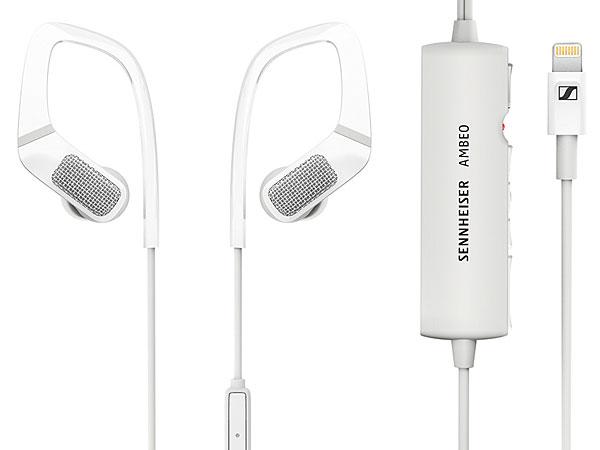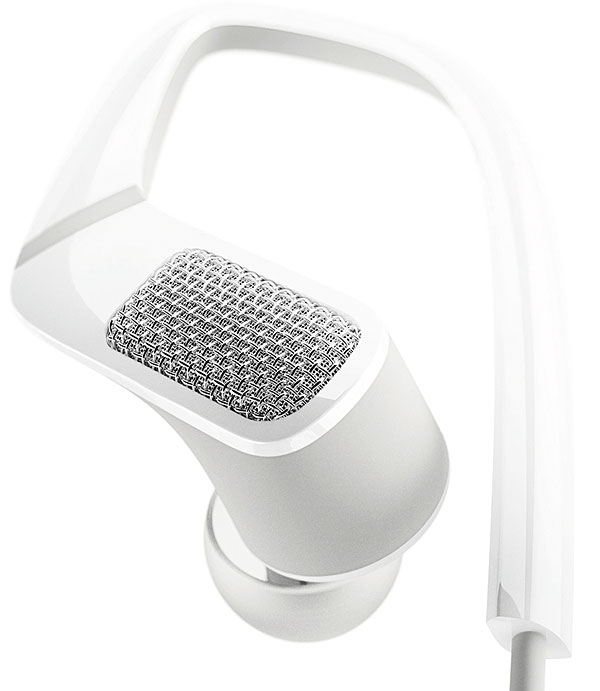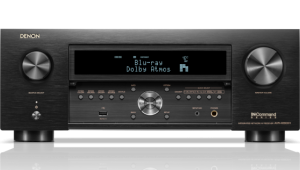Sennheiser Ambeo Smart Headset

So how’s it work? Patented omnidirectional microphones integrated into the headset’s earpieces pick up sound as your ears hear it, setting the stage for a binaural recording that replicates the spatial characteristics of the surrounding environment, directional sounds and all. Binaural recordings—made using a dummy head outfitted with microphone ears—have been around for decades, but with Ambeo, Sennheiser is applying the concept in a new and exciting way. The difference here is he who dons the Ambeo headset becomes the dummy (don’t say we didn’t warn you), only with the awesome ability to record binaurally on the fly.

To make the magic of 3D recording possible, the headset draws on three proprietary elements from Apogee: a mic preamp, precisely tuned analog-to-digital (A/D) and digital-to-analog (D/A) converters, and Soft Limit technology that optimizes recording levels in real time to preserve dynamic detail. The headset’s inline controller has several controls, including a Smart Slider to set microphone sensitivity for Normal or Loud (think concert) and a “situational awareness” rocker with settings for ambient noise level: One fades in outside noise so you can hear what’s going on around you, the other engages active noise cancellation; the feature is defeatable and can be used when recording or making a call. Sennheiser also offers a free app that provides access to more advanced control features and customization options.
For now, the Ambeo Smart Headset works only with iOS devices—it records audio via Apple’s Lightning connector and integrates with the standard iOS camera app—but Sennheiser says an Android-compatible version is in the works.

You can experience Ambeo recordings here. A series of short Urban Exploration videos recorded in cities around the world and Travel videos shot in spectacular locations such as California’s Joshua Tree National Park and the Azores off the coast of Portugal provide examples of Ambeo in action, some more convincing than others. Recordings made in the bustling cityscapes of Hong Kong, Berlin, New York, Los Angeles, and Paris are more compelling, so start there. It’s not hard to imagine a range of applications for Ambeo—from sporting events to family gatherings and vacations, all potentially more engaging with an Ambeo soundtrack.
The Sennheiser Ambeo Smart Headset sells for $300—and, in case you’re wondering, it functions perfectly fine as a normal set of earbuds. Well, not normal, but you know what I mean.



















































